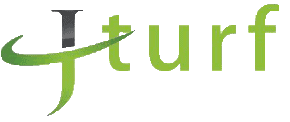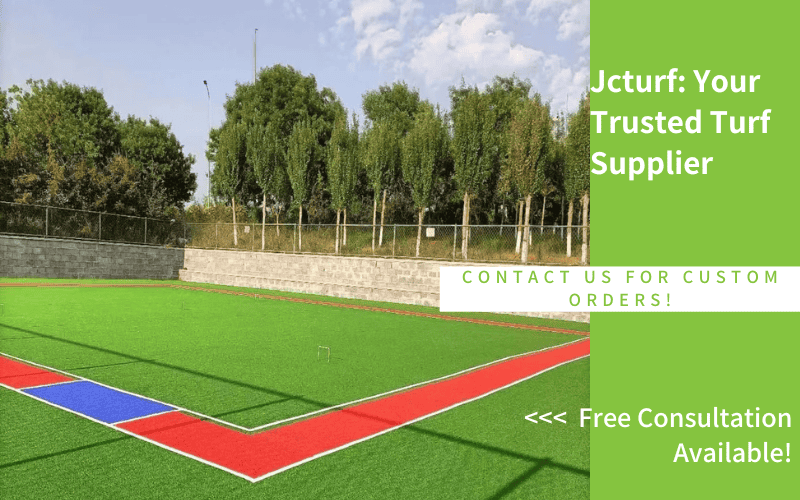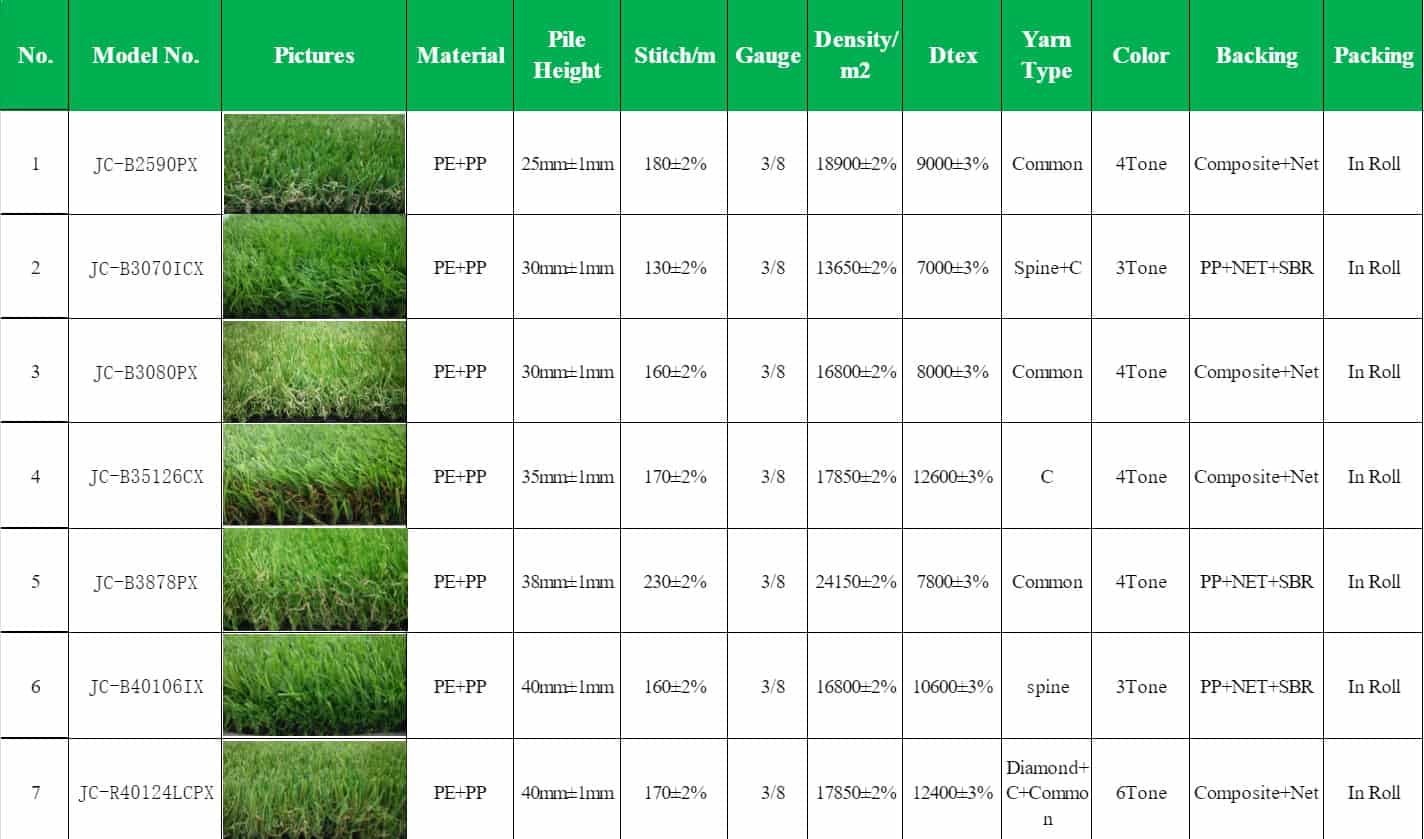Artificial turf comes in different forms, and nylon turf is one of the widely used options in the market. It is made from nylon fibers, which are known for their strength and ability to maintain their shape over time. These qualities make it a practical choice for certain high-traffic or performance-focused settings.
In this article, we’ll take a closer look at nylon turf’s unique characteristics, explore its ideal applications, compare its performance with other materials, and share practical buying tips—helping you make the smartest choice for your next project.
What is Nylon Turf?
Nylon turf is a type of artificial grass made with strong nylon fibers. You’ve probably seen it in places that get a lot of use—like indoor sports fields, gym training zones, or display areas in shopping centers. It comes in two main styles: monofilament blades, which look like individual strands of natural grass, and fibrillated fibers, which start as flat ribbons and split into thin strands over time to create a denser surface.
Nylon was one of the first materials used in artificial turf back in the 1960s. While other softer, less expensive materials have since become popular, nylon still plays an important role—especially in high-traffic or performance-focused areas, and sometimes in blends that combine durability with comfort.
How Nylon Turf is Made
The fibers are made by melting nylon pellets, shaping them into strands, and stretching them for strength. Compared to other turf materials such as polyethylene (PE) and polypropylene (PP), nylon is tougher and springs back into shape more easily, but it can feel firmer underfoot and often costs more.
Advantages of Nylon Artificial Turf
Known for its outstanding durability, resilience, and weather resistance, nylon turf is a favorite for high-performance and high-traffic applications.
Exceptional Wear Resistance
Nylon fibers are the most abrasion-resistant in the artificial turf family. Even under intense use and heavy foot traffic, they maintain their upright shape and resist fraying or breaking.
Resilience
Thanks to excellent fiber resilience, nylon turf bounces back quickly after being compressed, providing stable support and a responsive feel underfoot—ideal for sports like soccer, field hockey, and tennis that demand good rebound.
Strength
The fibers stand upright and resist matting, helping the turf maintain a tidy, well-groomed look over time. This stability is especially valuable in areas where appearance is a priority.
UV-Resistant & Weather-Proof
Nylon grass withstands prolonged sun exposure without fading or becoming brittle. It also remains flexible in colder temperatures, making it a reliable choice for year-round outdoor use.
Longer Lifespan, Better Value
With proper care, nylon turf typically lasts 30%–50% longer than polyethylene (PE) or polypropylene (PP) turf, making it a smart investment for long-term applications.
Versatile Applications
From professional sports fields to commercial exhibitions, landscaping, and playgrounds, nylon turf delivers lasting beauty and performance across a wide range of environments.
Environmental and Safety Considerations
Many nylon turf products are designed with low heavy metal content and can be recyclable, aligning with certain environmental and safety standards.
Pro Tip: Nylon turf generally costs more than other materials and may feel slightly firmer underfoot. If used for leisure or children’s play areas, consider pairing it with a thicker shock-absorption layer.
Disadvantages of Nylon Artificial Turf
While nylon turf excels in durability, resilience, and lifespan, there are several considerations to keep in mind before choosing it:
- Higher Cost: Nylon is more expensive to produce than polyethylene (PE) or polypropylene (PP), often costing 1.5–3 times more. For large installations, this price difference can be significant.
- Firmer Underfoot: Nylon fibers are stiffer, giving a firmer feel when walked on. This may be less comfortable for barefoot use, leisure areas, or children’s play spaces.
- Turf Burn Risk: Its stiffness and abrasion resistance can cause skin abrasions—commonly known as “turf burn”—if someone falls or slides on it during sports or other activities.
- Moisture Absorption & Odor Issues: Unlike PE, nylon is semi-permeable and absorbs moisture. Pet urine, drink spills, or heavy rain can lead to unpleasant odors, and drying may take longer.
- Limited Color and Realism Options: While available in different shades of green, nylon turf offers fewer variations in color and texture compared to PE, which may matter for landscaping projects aiming for a highly realistic look.
- Less Suitable for General Landscaping: Because of its higher cost, potential odor issues, and firmer feel, nylon turf is less commonly used for general landscaping and is more often found in sports fields or specialized applications.
What is Nylon Turf Good for: Main Uses of Nylon Artificial Turf
Nylon turf is known for its abrasion resistance, resilience, and weather durability, making it suitable for areas that experience heavy use or require consistent performance over time. Common applications include:
1. Professional Sports Fields: Used in soccer, American football, field hockey, tennis, and other sports venues that demand a surface capable of withstanding frequent impact and friction. Nylon’s strength and impact resistance help maintain an even, stable playing field throughout matches.
2. Indoor Sports & Training Facilities: Ideal for indoor futsal courts, fitness training zones, sprint tracks, and other areas with high foot traffic. Its quick recovery and durability ensure it performs well under repeated, high-intensity use without losing its shape.
3. Commercial & Event Spaces: Nylon turf is a practical choice for exhibitions, event stages, shopping malls, and high-traffic commercial areas such as rooftop decks, patios, and commercial landscapes. It maintains a clean, upright look and is easy to maintain.
4. Playgrounds & School Fields: Frequently used in playgrounds and school sports grounds where durability is essential. While firmer underfoot, pairing it with a shock pad can improve comfort and safety for children.
5. Golf Putting Greens: Its stiffness and ability to maintain a smooth, even surface make it a popular choice for putting greens, ensuring consistent ball roll and speed.
6. Public & Recreational Areas: Common in parks, community activity zones, and other public spaces that see constant activity, where it retains its appearance and performance over time.
7. Residential Lawns & Gardens
- Back Gardens: Durable and low-maintenance, ideal for gardens frequently used by children and pets.
- Residential Lawns: Resists wear and extreme temperatures, providing a long-lasting, neat green space for homes.
8. Industrial & Special-Purpose Areas: Well-suited for high-traffic corridors, warehouse buffer zones, pet training areas, and other environments that require a robust, long-lasting surface.
Note: While nylon turf can be used in landscaping, its higher cost, firmer feel, and limited color options make it less common for purely decorative purposes. It is more often chosen for functional settings where performance and durability are priorities.
Cost of Nylon Turf
Nylon turf generally costs more than other common artificial turf materials such as polyethylene (PE) and polypropylene (PP). This is largely due to the higher production cost of nylon fibers and their superior durability.
Typical Price Range
Material only: Around $3–$6 per square foot (≈ $32–$65 per m²) depending on quality, pile height, and density.
Installed price: Including ground preparation, base materials, and installation labor, nylon turf can range from $7–$15 per square foot (≈ $75–$160 per m²).
Factors That Affect Price
- Fiber Quality & Density: Higher Dtex (fiber thickness) and stitch rate increase material cost but improve durability.
- Pile Height: Taller blades require more material and may be more expensive.
- Backing Type: Premium polyurethane backing is typically pricier than latex.
- Customization: Special colors, markings, or branding will raise the cost.
- Installation Complexity: Sloped areas, intricate designs, or indoor/outdoor transitions can increase labor costs.
While nylon turf has a higher upfront price, its longer lifespan and resilience in high-traffic areas may offset replacement costs over time. However, for projects where comfort, softness, or budget are higher priorities, PE or PP turf may be a better fit.
How long does nylon turf last?
Nylon turf typically lasts 8–15 years, depending on factors such as usage intensity, installation quality, material grade, and ongoing maintenance. Premium products, when installed and maintained properly, can last 15–20 years or more.
Why It Can Last Longer
High Wear Resistance: Fibers resist crushing and matting, helping the turf keep its structure in high-traffic areas.
Shape Retention: Blades spring back after use, preserving a tidy appearance.
Weather Tolerance: Withstands heat, cold, and prolonged UV exposure better than many other turf materials.
Quality Build: UV protection and durable polyurethane backing enhance performance and longevity.
What Reduces Its Lifespan
Poor Installation: Inadequate base preparation or drainage leads to uneven wear or damage.
Extreme Heat: Sustained high surface temperatures can make fibers brittle.
Abrasive Use: Dragging heavy equipment or furniture can fray fibers.
Lack of Maintenance: Skipping cleaning, brushing, or infill replacement accelerates wear.
Nylon is generally the most durable turf material, often outlasting polypropylene (PP) and matching or exceeding high-grade polyethylene (PE). Manufacturer warranties usually range from 8–15 years, covering defects but not total lifespan. Even after 15–20 years, signs of flattening or wear may appear, yet with consistent upkeep, nylon turf can remain functional beyond its expected service life.
Is nylon artificial grass the best?
Nylon artificial grass is the most durable of the common turf materials, but whether it’s the best choice will depend on your priorities—durability, comfort, appearance, or budget.
Comparison of Nylon and Other Artificial Turf Materials
| Feature | Nylon | Polyethylene (PE) | Polypropylene (PP) |
| Abrasion Resistance | Very high – ideal for heavy use | High – suitable for most landscaping and sports needs | Low – wears out quickly |
| Resilience | Excellent – recovers shape quickly after compression | Good – works well for leisure and landscaping | Fair – flattens more easily |
| Underfoot Feel | Firm | Soft, natural feel close to real grass | Firm, less natural |
| Weather Resistance | UV-resistant, tolerates extreme temperatures | Good UV resistance | Moderate – less weather-resistant |
| Moisture Absorption | Semi-permeable, absorbs some moisture; slower to dry | Minimal absorption, dries quickly | Does not absorb moisture |
| Color & Realism | Fewer color choices, moderate realism | Wide range of colors, high realism | Limited colors, low realism |
| Cost | High – about 1.5–3× the cost of PE | Medium | Low |
| Best Applications | High-intensity sports fields, high-traffic areas, putting greens | Landscaping, leisure sports areas | Temporary events, low-use areas |
| Service Life | Long – 30%–50% longer than PE or PP | Moderate | Short |
| Environmental Impact | Long-lasting but non-biodegradable; ends up in landfill | Similar to nylon | Similar to nylon |
Which is better nylon or polyethylene putting greens?
The choice between nylon and polyethylene (PE) for putting greens depends on your priorities for performance, feel, and maintenance.
Nylon Putting Greens: Known for their firmness and excellent ball roll consistency. The dense, upright fibers create a faster surface, making them a good option for golfers who want to closely replicate the speed of professional indoor greens. They also resist wear well, even with frequent practice. However, nylon can feel less natural underfoot and may run hotter in direct sunlight.
Polyethylene Putting Greens: Softer and more natural in appearance, PE greens offer a slightly slower ball roll but a more realistic grass-like feel. They’re often chosen for outdoor greens where comfort, aesthetics, and temperature control matter more. PE may require more maintenance to keep fibers upright over time, especially in high-use areas.
In summary:
- Choose nylon if you want maximum durability and a faster, more consistent roll for intensive practice.
- Choose PE if you prefer a softer, more natural feel and are aiming for a balance between performance and comfort.
Nylon Turf Buying and Maintenance Tips
Buying Tips
- Density (Dtex): Higher Dtex values indicate thicker, more durable fibers. For high-traffic areas, choose a higher density for better wear resistance.
- Pile Height: Shorter blades (e.g., 20–30 mm) provide a neater look and require less maintenance, while taller blades (35 mm+) offer a lusher appearance but may need more upkeep.
- Fiber Shape: Monofilament fibers create a more realistic look, while fibrillated fibers provide better coverage and stability. Choose based on your performance and aesthetic goals.
- Backing Type: Polyurethane backing is highly durable and water-resistant, while latex backing is more economical but less moisture-resistant.
Installation Tips
- Base Preparation: Ensure a well-compacted, level base with proper drainage to prevent uneven wear and water pooling.
- Weed Barrier: Install a weed-control fabric beneath the turf to prevent unwanted growth.
- Infill Choice: Use silica sand or coated infill to improve fiber stability, maintain blade position, and protect against UV damage.
Maintenance Tips
- Regular Cleaning: Remove debris, leaves, and dirt to keep the turf clean and free from mold or moss.
- Brushing: Periodically brush the fibers against the grain to maintain their upright position and prevent matting.
- Anti-Static Measures: In dry climates, occasional watering or anti-static treatments can reduce static buildup.
- Extending Lifespan: Address spills promptly, avoid dragging heavy objects across the surface, and replenish infill as needed to maintain performance and appearance.
JCturf – Your Trusted Nylon Artificial Turf Manufacturer and Supplier
Product Highlights:
As a professional artificial turf manufacturer and supplier, JCturf delivers nylon turf solutions engineered for strength, performance, and long-term value:
- Optimal fiber density and pile height for excellent stability and visual appeal.
- UV protection and premium polyurethane backing for extended durability in all climates.
- Innovative fiber designs that balance toughness with a realistic grass-like appearance.
Customization Services:
We provide tailored production to meet diverse project needs, including:
- Custom colors, pile heights, and density specifications.
- Specialized fiber shapes for unique visual or performance goals.
- Design options optimized for specific climates, usage types, or sporting standards.
Whether you are building a sports facility, enhancing a commercial landscape, or planning a high-performance custom installation, JCturf can design, produce, and supply the right nylon turf for your project.


